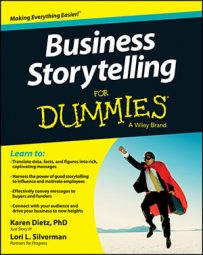Getting someone to tell you a story that you can use in your business can be a challenge. Story modeling and story triggers are two methods you can use to help people share their experiences.
Prime the pump: Story modeling
One way to get the full story with your story prompt is to tell a story before you ask for one in return. By doing so, you demonstrate how to open up, show willingness to tell something about yourself, and give others permission to do the same. This makes them comfortable and relaxed.
And more often than not, you'll spontaneously spark a story in your listener that they'll want to share with you in return. Stories are truly like viruses. Think about your daily conversations. Someone shares a story with you, and a similar experience pops into your head that you want to share. If the conversation is mutually satisfying, you end up swapping stories back and forth.
There are times when you'll begin to model a story, and someone will jump in and start telling you a similar story in return. What do you do? Stop talking. Let the person talk. Isn't that what you wanted in the first place?
Whether you're with one person or a group, prime the pump by sharing a short, well-thought-out story first. Follow it by asking for a story via a story prompt. Be prepared. The floodgates will open. Lack of stories will never be your problem.
Evoke a story with memories, props, and more: Story triggers
Want one more way to get stories from people? Try using story triggers. How does this work? Imagine holding up a photo or image and asking for a story about a memory it triggers. "As you look at this photo, tell me about a time when . . ."
Alternatively, you could share a photo and ask people to identify all the sounds, emotions, and tastes that come to mind. This is useful when you need to capture creative ideas and sensory images to use in conjunction with stories in marketing materials.
Here are a few more ideas. Play a piece of music or an audio file and ask people to communicate the very first story that comes to mind. Or share a metaphor and ask for a story. For example, you could say, "Tell me about a time when the saying have your cake and eat it too held true for you."
Be creative. Almost anything can be used as a story trigger. When one company wanted to introduce a major transformation, the company created a crystal pyramid engraved with various symbols (such as the Chinese symbol for change) and quotations about change on each side of it.
All executive team members received a pyramid and were asked to put it in a visible location in their office. It sparked a lot of conversation about the current change that was under way in the organization.
Be careful about showing a photo or image and having people make up a story about it to use in decision-making. This will catapult you into the land of getting stories about what others think they need. Unknowingly, you'll cloud the issue. Only when you use people's past memories and experiences in the form of stories will you get true clarity.

